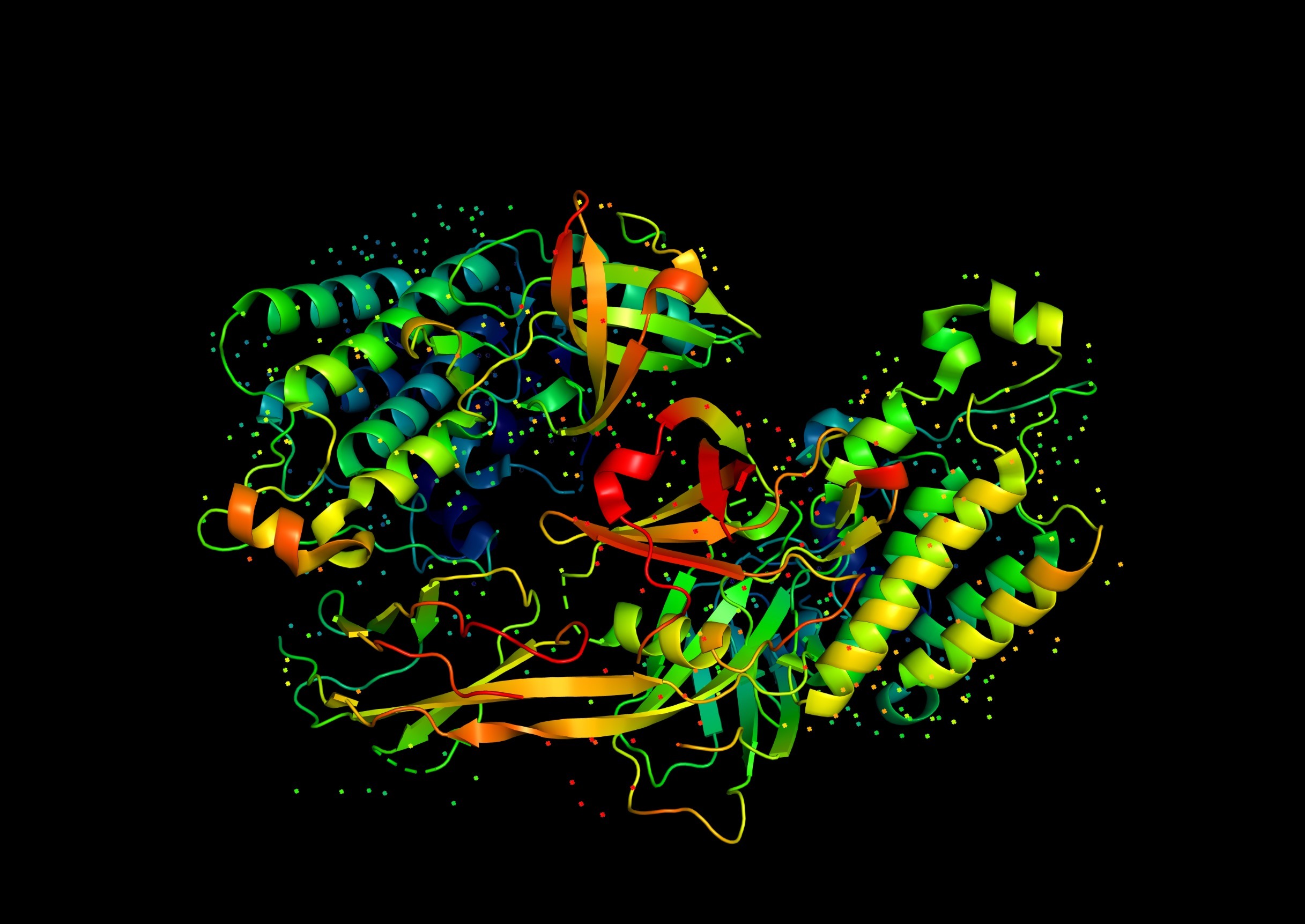Protein purification is a fundamental step in biochemical research, biotechnology, and pharmaceutical development, enabling the isolation of specific proteins from complex mixtures. Among the myriad of purification techniques available, Protein A affinity chromatography stands out as a versatile and widely-used method for the purification of antibodies and antibody-containing samples. Our article delves into the principles, applications, advantages, and limitations of Protein A affinity chromatography, highlighting its significance in protein purification workflows.
It is a a good example of affinity chromatography being exploited on an industrial scale.
Principles of Protein A Affinity Chromatography
Protein A is a bacterially derived receptor protein found in the cell wall of Staphylococcus sp. Other bacterial derived proteins include streptococcal Protein-G, Protein-L from Peptostreptococcus magnus and Protein-M from Mycoplasma. Protein-A and -G are multispecific for binding the region of immunoglobulins connecting CH2 and CH3. (Kato et al., 1995).
Most Protein A is derived from commercial fermentation of Staphylococcus aureus, possesses a high affinity for the Fc region of immunoglobulins, particularly IgG from various species such as humans, mice, and rabbits. The binding between Protein A and the Fc region of IgG is highly specific and reversible, making it an ideal interaction for affinity chromatography purification.
In terms of its structure, Protein A is a 42 kDa single polypeptide chain made up of five Fc binding domains called E,A, D, B,C and X. That latter domain a is a cell wall-binding domain. There is a hydrophobic reaction between Protein-A and the Fc region of Immunoglobulin G (IgG). The IgG is eluted when a low pH buffer is used for elution.
In Protein A affinity chromatography, a Protein A ligand is immobilized onto a solid support matrix, typically agarose beads, forming a stationary phase. When a sample containing IgG or antibody-containing fractions is applied to the column, the IgG molecules selectively bind to the immobilized Protein A ligand via their Fc regions. Subsequent washing steps remove non-specifically bound proteins, leaving the purified IgG or antibody fractions bound to the column. Elution of the target protein is achieved by disrupting the Protein A-IgG interaction, typically through changes in pH, ionic strength, or the addition of competitive ligands.
Applications of Protein A Affinity Chromatography
Protein A affinity chromatography finds widespread applications in various fields, owing to its high specificity, robustness, and ease of operation. One of its primary applications is the purification of monoclonal and polyclonal antibodies from cell culture supernatants, ascites fluid, or serum samples. This is particularly valuable in the production of therapeutic antibodies for clinical use, where purity and yield are critical parameters. Additionally, Protein A affinity chromatography is employed in the purification of antibody fragments, antibody conjugates, and recombinant proteins fused to antibody domains. Its versatility extends beyond antibody purification, encompassing applications in immunoassays, diagnostics, and protein-protein interaction studies.
Advantages of Protein A Affinity Chromatography
Protein A affinity chromatography offers several distinct advantages over alternative purification methods, contributing to its widespread adoption in protein purification workflows. Firstly, the specificity of the Protein A-IgG interaction enables highly selective purification of antibodies, minimizing co-purification of contaminants and ensuring high product purity. Moreover, Protein A affinity chromatography can be easily scaled up to accommodate large-scale production requirements, making it suitable for industrial-scale antibody manufacturing. Additionally, the reversible nature of the Protein A-IgG interaction facilitates efficient elution of the target protein under mild conditions, thereby preserving protein integrity and activity. Furthermore, the robustness and reproducibility of Protein A affinity chromatography make it a reliable and cost-effective purification technique, particularly for routine laboratory applications.
Limitations and Considerations
Despite its many advantages, Protein A affinity chromatography has certain limitations and considerations that should be taken into account during experimental design and optimization. One limitation is its specificity for IgG molecules, which may preclude its use for purifying antibodies of different isotypes or non-IgG proteins. Additionally, certain factors such as the presence of aggregates, high concentrations of salt, or extreme pH conditions may affect the binding efficiency and selectivity of Protein A affinity chromatography. Moreover, the cost associated with Protein A ligands and agarose matrices may be prohibitive for some applications, particularly in resource-limited settings. Careful selection of chromatography conditions, including buffer composition, pH, and flow rate, is essential for optimizing the performance of Protein A affinity chromatography and achieving desired purification outcomes.
Future Perspectives and Innovations
Continued advancements in protein engineering and chromatography technology hold promise for enhancing the capabilities of Protein A affinity chromatography and expanding its utility in protein purification. For instance, the development of novel Protein A variants with enhanced binding affinity or altered specificity could broaden the range of antibodies amenable to purification using this method. Furthermore, innovations in chromatography resin design, such as the development of higher-capacity matrices or alternative support materials, may improve the efficiency and cost-effectiveness of Protein A affinity chromatography. Integration of Protein A affinity chromatography with other chromatographic techniques, such as ion exchange chromatography or size exclusion chromatography, in multi-step purification strategies could enable more comprehensive purification of complex protein mixtures.
In conclusion, Protein A affinity chromatography stands as a cornerstone technique in protein purification, particularly for the isolation of antibodies and antibody-containing samples. Its high specificity, scalability, and ease of operation make it an indispensable tool in research laboratories, biopharmaceutical companies, and diagnostic facilities worldwide. Despite its limitations, Protein A affinity chromatography continues to evolve through technological innovations and scientific advancements, reaffirming its status as a fundamental technique in the field of protein science and biotechnology.
Some researchers contend membrane chromatography might be an alternative to conventional resin-based methods. Membrane chromatography is also claimed to have higher productivity with a lower cost of goods attached. It can also be scaled up from a ml volume to a 1 litre device.
References
Kato, K., Lian, L.Y., Barsukov, I.L, et al. (1995) Model for the complex between protein G and an antibody Fc fragment in solution. Structure. 3 pp. 79–85.

Leave a Reply